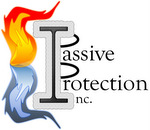Hospitality, Dining, and Entertainment
Hotels, restaurants, nightclubs and entertainment venues face a unique set of challenges in their efforts to provide fire safe establishments for their patrons, staff, and guests.
The high-volume ebb and flow of clientele, new and more elaborate performances, presence of candles and cooking surfaces, and long hours of operation are just a small sample of the variables creating an ever-changing environment for which they must be prepared.
Page Jumps:
Fireproofing Applications
As part of each location’s safety plan, properly applied and maintained flame retardant treatments provides a valuable measure in preventing the ignition and spread of fire, and in the case of a fire will significantly decrease the amount of smoke generated.
Passive Protection, Inc. performs all treatments on-site using non-toxic products and scheduling is done at the convenience of the customer. Initial certifications, cleaning, and recertifications are often completed same-day. Each site is left clean, protected, and compliant.
Inherently Flame Retardant (IFR) Fabrics
It is very common for IFR fabrics to be specified for fabrication of furnishing and decorations during the Design Build phase. A common misconception is that these treatments are flame resistant forever. The processes which impart flame resistant properties are just as susceptible to failure over the “life” of the fabric as topical treatments. The “life” of the fabric depends heavily on a variety of factors such as maintenance procedures such as laundering or commercial cleaning, a lack of maintenance causing the buildup of airborne grease and dirt or dust, and external environmental factors including UV or sunlight damage and humidity. Wear and tear, location, and handling also play a large role in diminishing the original flame ratings.
All fabrics, IFR included, require formal Program Management to ensure proper protection is being afforded.
Compliance for Inspection and Insurance
Because of the potential risk, fire prevention units are diligent in ensuring consistent compliance with all applicable codes and routinely conduct inspections to verify systems are in place, up-to-date, and functioning properly. Valid and active documentation is critical, including Flame Certificates. Each Passive Protection application is finalized with a Flame Certificate listing all requisite information for submission to Fire Prevention teams and in support of routine inspections.
Beyond Building and Fire Code requirements are liability and insurability challenges. As with most passive safety systems, confirming their continued effectiveness is very difficult – they are, by nature, designed to be unrecognized until an emergency arises. Flame retardants and fireproofing applications must be monitored, renewed, and recertified over time and following maintenance or refinishing. CODEpliance, Inc.’s Compliance Monitoring is designed to actively track applications and report upcoming expiration dates. This information is readily available for consideration by insurers in determining coverage premiums and deductibles.
Flame Retardant Application Table
| Where? | What? | Who? |
|---|---|---|
| Means of egress | Upholstery | Owner |
| Lobbies | Window Treatments | Operations |
| Common Areas | Decorative Wall-coverings | General Manager |
| Hallway Corridors | Seasonal Decorations | Facilities Manager |
| Meeting rooms | Banners | Construction Project Manager |
| Function Halls | Room partitions | Controller |
| Dining Rooms | Fabric Walls | Legal |
| Lounges | Convention Booths | Insurance Liaison |
| Club Rooms | Tablecloths | |
| Utility rooms | Expandable displays | |
| Stage curtains |
CODEpliance Services
| Applicable Services |
|---|
| Compliance Program |
| Flame Retardant Treatment |
| Fireproofing Application |
| Certification |
| Specialized Maintenance |
| Recertification |

